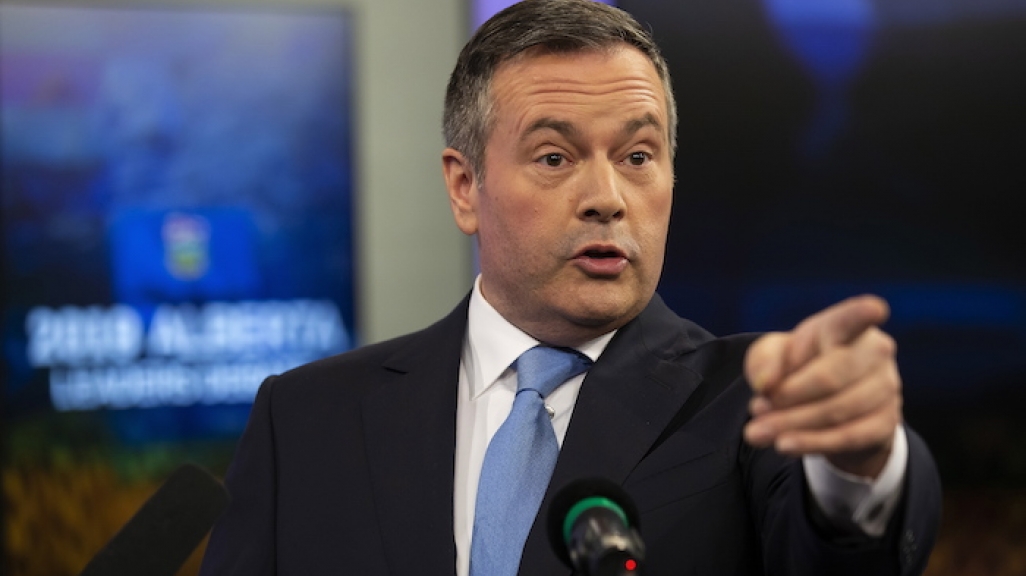Viewpoint: Alberta's Electoral Winner Pledges to Right Energy Sector
Viewpoint: Alberta's Electoral Winner Pledges to Right Energy Sector
The electoral result in Canada’s top oil-producing province reveals dismay over lost energy sector opportunities, writes AS/COA’s Naki Mendoza.
A new leader in one of the Western Hemisphere’s largest oil-producing countries is calling for major changes to stem years of setback and decline sustained under his predecessor. The call is not coming up in Brazil, Colombia, or Mexico—but Canada.
The province of Alberta, the country’s energy powerhouse, elected Jason Kenney as its new premier on April 16, with a mandate to revive the province’s struggling oil sector. His task carries strong implications for global energy, given Alberta’s huge production footprint.
A political reversal
Kenney’s election was a rebuke of the status quo. A former cabinet member under Prime Minister Stephen Harper, Kenney is a member of the United Conservative Party (UCP) and ousted incumbent Premier Rachel Notley of the left-leaning New Democratic Party (NDP). The NDP’s victory in 2015 broke four consecutive decades of UCP leadership in Alberta. The party’s loss now makes them the first government in the province to be voted out after just a single term. Overall, the UCP won 63 of 87 provincial legislature seats in the April 16 vote.
The emphatic pendulum swing rests largely with the dismaying state of Alberta’s bread-and-butter petroleum industry. Canada is a global energy giant and the world’s fourth-largest producer of crude oil. The petroleum sector accounts for some 10 percent of Canada’s GDP and 20 percent of its exports. Approximately 80 percent of the country’s total oil production comes from Alberta. The roughly 3.7 million barrels per day of production in Alberta exceeds the output of most OPEC member countries.
But Alberta’s oil sector has been battered since the province’s last elections. The drop in oil prices around 2014 caused a sharp loss in revenue for global operators, Alberta being no exception. Most of Alberta’s oil comes from oil sands, thick formations of bitumen whose production process is closely akin to standard mining operations. But the high costs and carbon content of developing Alberta’s oil sands have made them a risky bet for energy producers. As a result, international firms such as Shell and ConocoPhillips have pulled the plug on oil sands projects. As part of his pitch for office, Kenney cited high unemployment rates arising from the exodus of industry capital.
A pipeline problem
Pipeline constraints to carry oil resources to market have exacerbated Alberta’s energy woes. Nationally, Canada is subject to a form of tyranny of demand: 99 percent of its oil exports go to one consumer: the United States. The handful of pipelines that transport Canadian oil to the United States—practically all originating from Alberta and Western Canada—are operating at full capacity. Attempts to expand Western Canada’s 3.9 million barrels per day of pipeline capacity have run into political and regulatory roadblocks on both sides of the border. The most notable case is perhaps the nearly decade-long legal battle over Canadian firm Enbridge’s Keystone XL pipeline extension.
The capacity issue came to a head late in 2018 when maintenance outages at U.S. refineries that receive Canadian oil caused a backlog in Alberta’s output. The glut in supply led to a collapse in prices for Canadian producers. At one point in November 2018, Western Canadian Select, the benchmark price for Alberta’s heavy oil dropped as low as $10 per barrel. The price represented a $45 discount to what U.S. traders paid for Mexican Maya crude, a similar type of oil used by U.S. Gulf Coast refiners.
The price differential was costing the province roughly $60 million a day in lost revenues, according to Notley, who mandated a production cut of 325,000 barrels per day to relieve the pressure on prices. The price difference has since narrowed significantly.
Domestically, though, the pipeline politics are just as thorny. An eastern-bound TransCanada pipeline to send oil to Québec and New Brunswick was scrapped in 2017. Similarly, a proposed extension of the TransMountain pipeline that would ship Alberta oil west to British Columbia for eventual export to Asia was burdened by regulatory delays and reviews in response to opposition on environmental grounds. The federal government in Ottawa took the rare step of purchasing the project from its original developer Kinder Morgan to see through its completion. Prime Minister Justin Trudeau announced this week that a final investment decision on the project would be made next month.
Kenney has pledged to take a more combative stance on pipelines approvals. He has threatened to switch off the taps that pump Alberta’s resources to neighboring provinces, although industry observers doubt whether he would actually follow through. More viably, he has called to scrap Alberta’s $22-per-ton-tax on carbon—a measure adopted under Notley. Doing so would likely pit the province against the Trudeau government, whose policy is to impose a carbon tax on any province that does not have one deemed sufficient enough by Ottawa.
There are limited political options when it comes to Kenney’s fight for pipeline expansions. The fact that Canada has not built a new major crude oil pipeline in nearly 10 years reflects forces outside of one province’s control. Pipeline approvals are ultimately dealt with federally through Canada’s National Energy Board, with key interim decisions determined by local courts and other provincial governments where the pipelines traverse.
A missed chance
Meanwhile, Alberta continues to lose out. Already, Canadian crude has missed the chance to be the prime replacement for lost oil supplies from Venezuela to the United States. Alberta’s heavy oil—similar in quality to the Venezuelan crude taken by Gulf Coast refiners—was expected to be a beneficiary of industry sanctions on Venezuela’s oil trade. Canadian firms had been moving higher volumes of oil to the U.S. Gulf via rail at the end of 2018. Though moving crude by rail is more expensive than pipelines, it was a feasible option for U.S. buyers when Canadian oil was cheap. But when prices rose as production cuts got phased out, rail shipments became too costly.
Looking west, if Canada’s provincial governments, in concert with federal regulators, do end up expanding pipeline capacity to the Pacific Coast, it would be a boon for the country’s export options. Shipping routes to Asia from Canada’s west coast are an estimated 50 percent shorter than from the U.S. Gulf Coast—a major reason why a consortium led by Royal Dutch Shell is undertaking a nearly $31 billion liquefied natural gas investment in British Columbia.
Amy Iverson contributed to this article.









